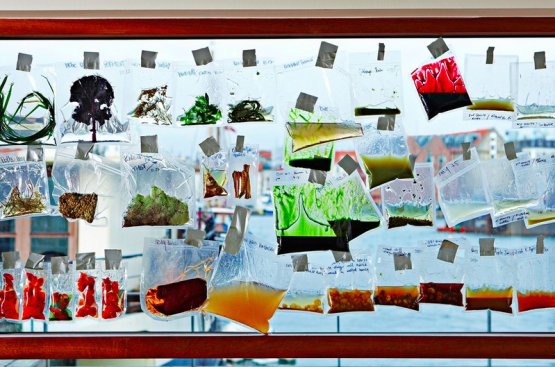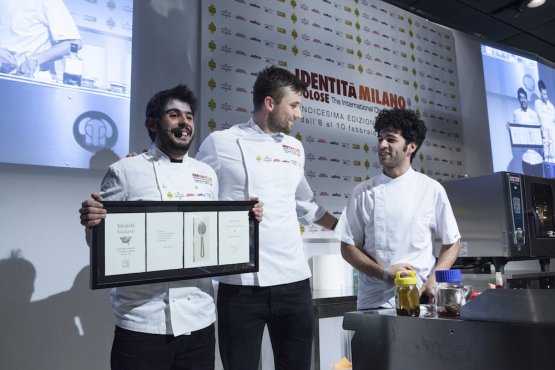I’ve always been intrigued by the infinite potential of the use of aromas in the kitchen: imagine how a perfume can influence our choices, recall the emotions of distant stories, making moments that were kept at the bottom of our memory vivid once again.
In this context, explaining smell in a scientific and detailed way and how it is perceived by our senses could lead us off topic. So let’s keep to the gastronomic scope and describe smell as one or a series of volatile chemical molecules that are perceived by special receptors inside our nasal cavity. This info is then conveyed to a specific area of the brain, where it is decoded and materialised in the shape of images. Focusing on plants, animals and insects, most of the chemical molecules they release, and we perceive as a smell, in fact hide a complex mechanism of chemical communication which rules the interactions between living organisms.

Students from different universities work at the Nordic Food Lab: Pollenzo, Copenhagen, Yale. It used to be located in a boat moored in front of Noma. Today it is in Rolighedsvej 30, 1958 Frederiksberg
Imagine, therefore, what a new and huge range of aromas would be available if we could widen our knowledge in this field, translating it later into culinary know-how to be applied in the kitchen. Moving beyond the limits of the evocative power of food would mean increasing the possibilities of describing the territory in which we live in a detailed way. An example? Imagine being able to capture the scent of bees moving and releasing the typical sweet aroma of lemon and lemon balm, communicating, with precision to the rest of the swarm the exact position of the queen. Being fascinated by the mechanisms of chemical communication I decided to further explore our capacity to comprehend this “language”. By approaching food in a more holistic way, I try to understand the potential characterising the interpretation of our territory.
“Signals of Identity” is the title I gave my lesson in February at
Identità Milano. The research started by tracing the profile of the moment in which the chef, counting on what is immaterial (aromas), shapes something tangible on the dish, creating unique sensations in the guests, connected with their personal experiences and linked by a unique leitmotiv which, in our case, is the forest. This study shows a “gap”. Despite the desire to illustrate the surrounding space objectively, the tendency to create icons out of certain species, dangerously leaves out many essential peculiarities, even though they represent the complex biodiversity of an ecosystem and the imperceptible balances connected with the survival of a territory. It is essential to use an approach that has no prejudgements and a wider vision in terms of available ingredients. This allows us to understand the edible and unexplored potential of a territory in a more complex way.

Flore, during the lesson, with Jonas Astrup Pedersen of the NFL and the faithful Davide Crobe (photo credits Brambilla/Serrani)
Using this basic approach, we have managed, at the
Nordic Food Lab, to understand and extract aromatic components that are totally unexpectedly, wrapped into elements available in nature, such as wild herbs, insects or other animals. Therefore, wondering who takes part in the odorous symphony we perceive when walking down the woods, in the case of the dish created in this 2015 edition, and imagining a territory as a unique level on which many elements are related to each other (including man) is a good starting point to understand the work we presented. An integrated vision that can see us as participants and observers before being interpreters.
The dish presented at
Identità Golose is the result of an intense year spent in the great North, in connection with its edgy and wild nature, capable of offering an extraordinary aromatic complexity to products. In this dish I enclose our vision of the Scandinavian forest, in which the desire to include the different elements composing it – including leaves – leads us to give each one of them the same value, dignity and reason for being.
1. to be continued